What's so cool about the prickly pear cactus is that it can provide a ton of food with zero supplemental water in a dryland ecosystem. Take a look at the photo above, this prickly pear cactus (unknown species) has been growing at our permaculture education and demonstration site in Ramona, CA for decades. It never gets a drop of supplemental water and we only get an approximate average of 15 inches of rain a year - yet every year it has tons of fruit! Check out how much fruit there is on a single pad below!
You know the fruit is ripe when it easily detaches from the pad with a push or pull. Pick as many apples as you can, leaving some on the plant for other animals. Set your bounty in a bucket or something sturdy as they get heavy.
Start by setting the fruit on the flat rim of one side so it stands on end and the part that separated from the pad is pointing up. Then fillet downward in sections around the apple as thinly as possible while still getting all the spines. Slice down until you are almost at the bottom, just before you hit the skin, then stop (like the photo below). Then you can either slice across the bottom horizontally or grab the slippery flesh and twist off of the skin. The best method kinda depends on the species.
As we said before, this fruit can be used for so many things but one of my favorite is just plain or in smoothies. You can make juice, wine, sorbet, syrup, or add them to just about any dish. Be creative and enjoy this amazing permaculture fruit!
Please like our Facebook page to be notified of new blog posts.
Link to Facebook page here.
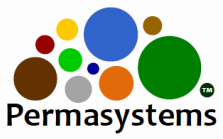
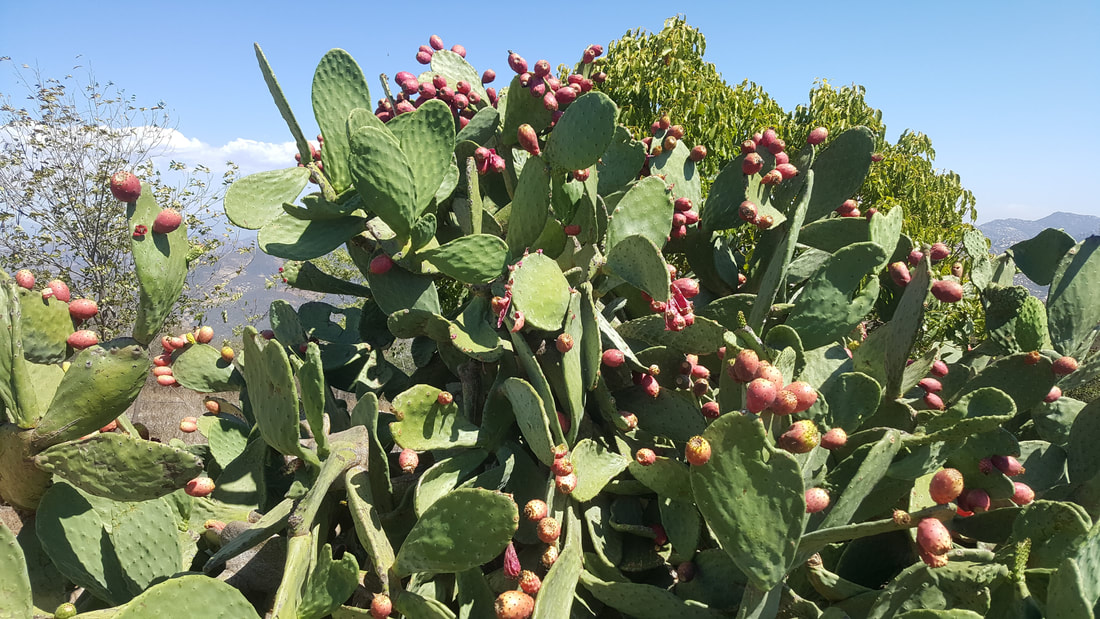
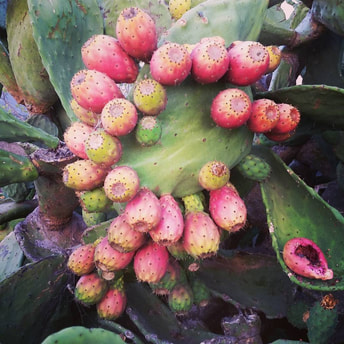
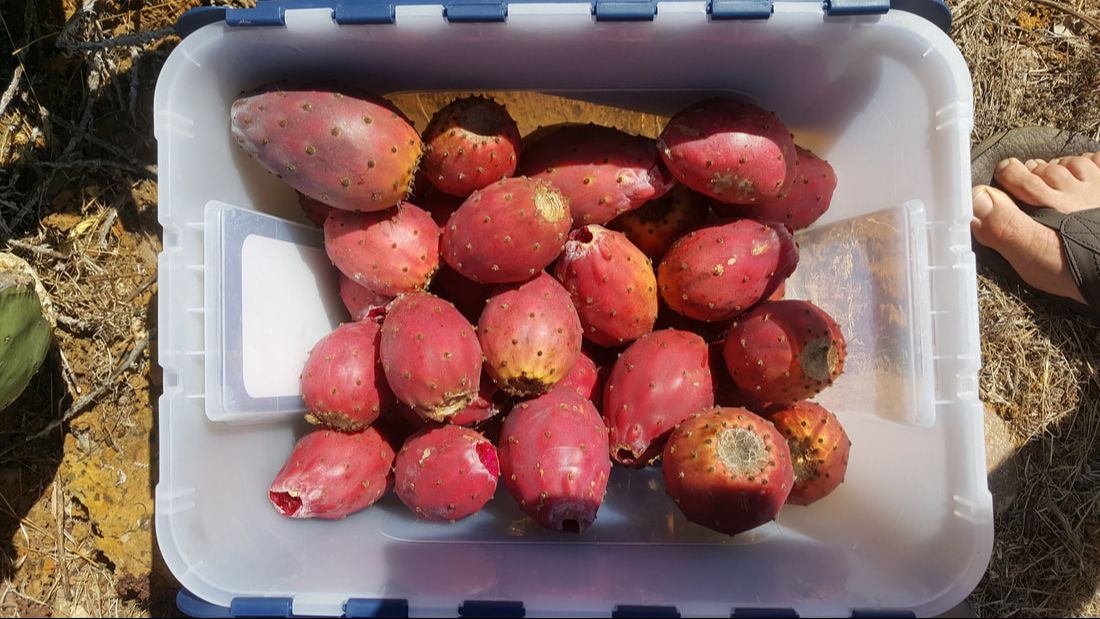
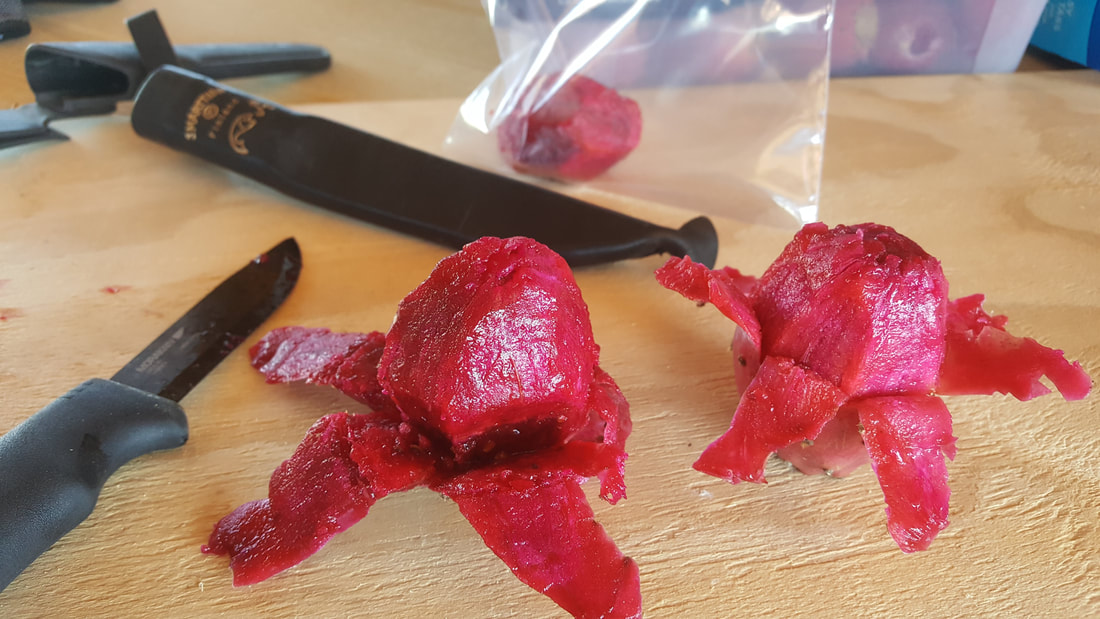

 RSS Feed
RSS Feed